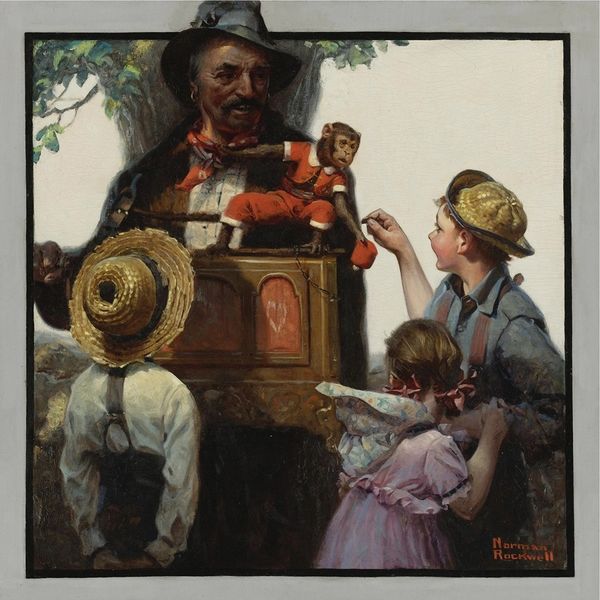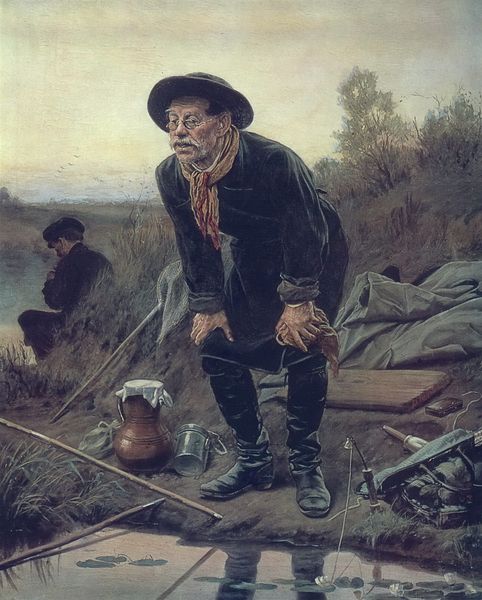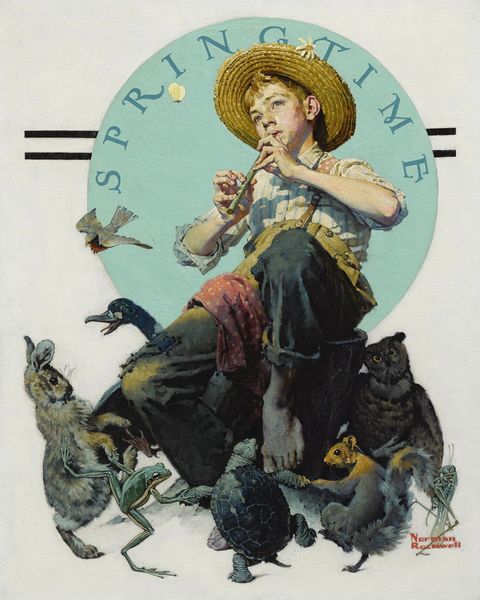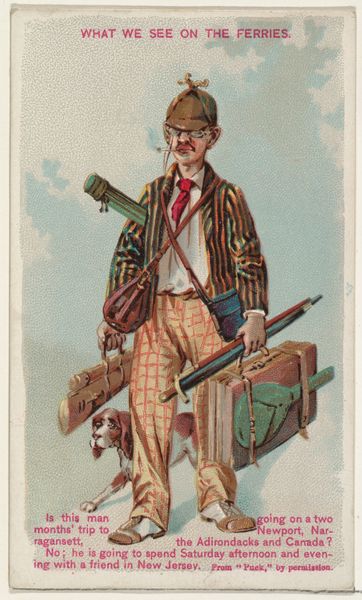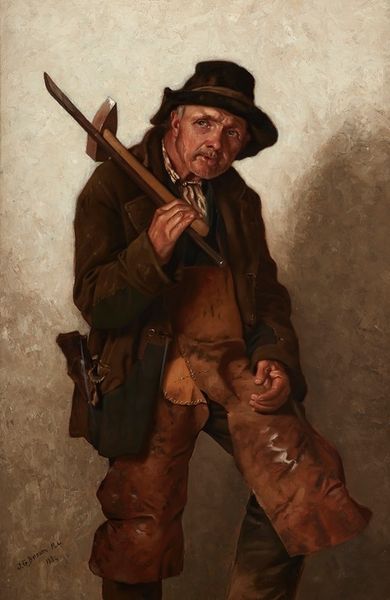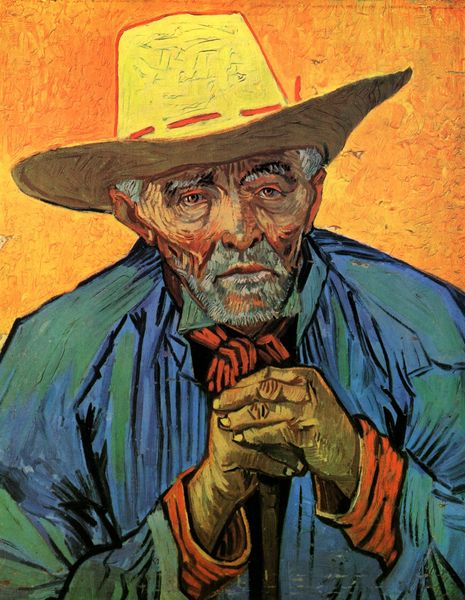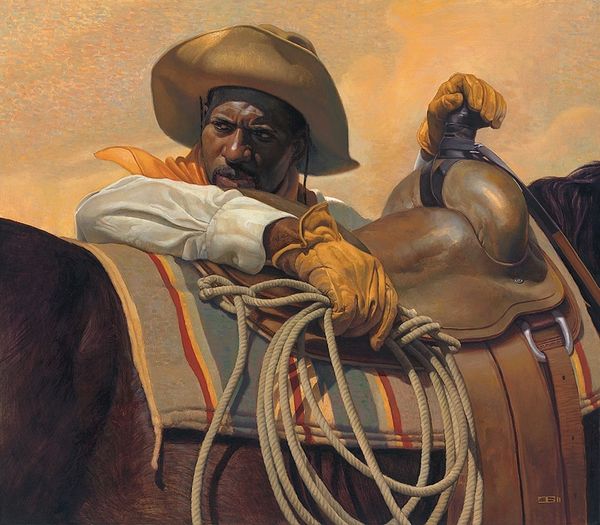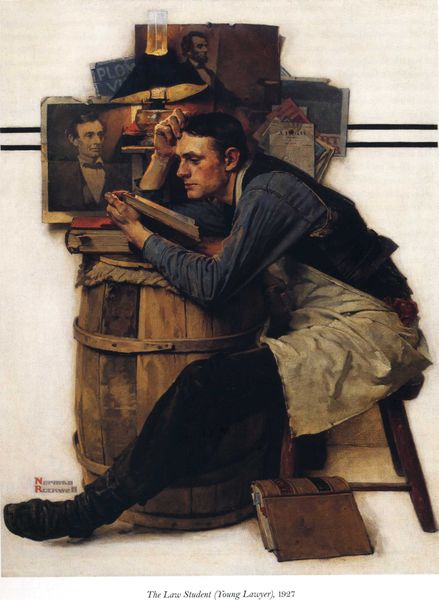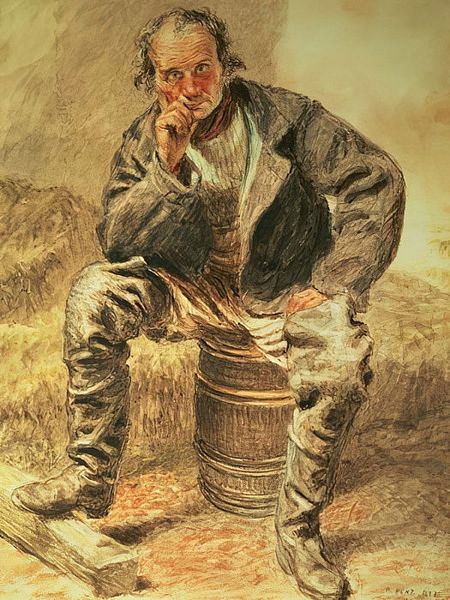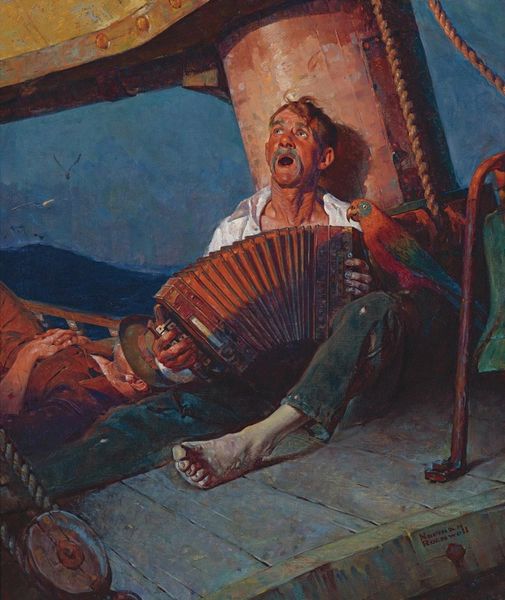
painting, oil-paint
#
portrait
#
painting
#
oil-paint
#
oil painting
#
genre-painting
#
realism
Copyright: Modern Artists: Artvee
Editor: So, here we have Norman Rockwell’s "Dreams of Long Ago," painted in 1927, oil on canvas. The whole scene has this feeling of, well, nostalgia, right? An older cowboy surrounded by things from his past. What kind of story do you think Rockwell is trying to tell with all these objects? Curator: A compelling story about fading legacies, wouldn’t you agree? Notice the phonograph, the playing cards, the dice...these are objects representing leisure and perhaps, risk-taking, but they are juxtaposed against the image of a cowboy, the embodiment of a rugged, bygone era. Doesn't the juxtaposition feel inherently melancholic? It begs the question: What happens when these symbols shift in meaning? Editor: Definitely! The "Dreams of Long Ago" record is central. Is it about personal memory or something bigger, about America's changing identity? Curator: Both, I believe. The cowboy, burdened with these outdated tools, perhaps speaks to America’s grappling with its own myths. He isn't actively riding; he’s seated, contemplating. The cultural memory of the 'wild west' meets a burgeoning modern identity, which transforms symbols into objects of curiosity. He represents the evolving perception and iconography of a nation. It feels so… human, doesn’t it? Editor: It does. The phonograph especially; it’s how people experienced stories back then, almost like the cowboy is listening to the soundtrack of his own past. The song title also contributes, suggesting yearning and possibly regret. So the items all speak about this loss of meaning? Curator: Exactly! Consider the gun holstered but unused. The sharp knife at the boot is surrounded by the cards and dice, both tools for a gamble in cards but with each marking signifying something when put together... The images collectively signal not just the past, but a *re-evaluation* of values, an unraveling of symbols we might take for granted. It becomes more than nostalgia; it’s a reflection on time and cultural endurance. Editor: I hadn’t thought about it that way. Now, looking again, it feels less sentimental and more… analytical. Thanks for clarifying! Curator: The joy of images lies in that capacity to evolve, doesn’t it?
Comments
No comments
Be the first to comment and join the conversation on the ultimate creative platform.
